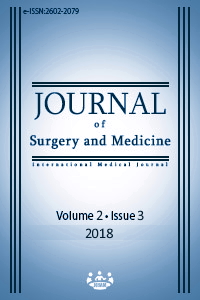Comparative study of Mycobacterium tuberculosis and Mycobacterium bovis protein profiles
Keywords:
Mycobacterium bovis, Mycobacterium tuberculosis, Membrane and Secretory proteinAbstract
Aim: Despite the drug resistance Mycobacterium bovis and Mycobacterium tuberculosis (MTB) are still regarded as two of the global health problems in the world. In the present study, a comparison was made between protein profiles of Mycobacterium bovis and MTB in order to achieve effective biomarkers for diagnosis of tuberculosis.
Methods: The clinical samples, sputum and gastric lavage (and the other samples) were processed by N-acetyl-L-cysteine-sodium hydroxide methods and consequently were cultured on Lowenstein–Jensen medium. Mycobacterium tuberculosis and bovis strains were distinguished according to the biochemical tests and susceptibility testing system. Colonies were grown in 7H9 medium and membrane and secretory proteins were extracted, purified by ammonium sulfate and refrigerated alcohol methods.
Results: The protein contents were measured by Bradford method. Comparison of protein bands in each strain were performed by one dimensional electrophoresis.
The major discrepancy between the two strains in the banding separation membrane proteins could be observed in 45 and 60 KDa and also less than 45 and 14 KDa.
Conclusion: The results showed that discrepancy in the proteins bands could be used as protein effective biomarker for tuberculosis diagnosis. We should use antibody against tuberculosis for further investigation for rapid tuberculosis diagnosis.
Downloads
References
Global tuberculosis Report. 2015. World health organization, 2015
World Health Organization. Global tuberculosis control; surveillance planning, financing. WHO Report. Geneva, Switzerland: WHO; 2014.
Majoor CJ, Magis-Escurra C, Van Ingen J, Boeree MJ, Van Soolingen D. Epidemiology of Mycobacterium bovis disease in humans, The Netherlands, 1993–2007. Emerg Infect Dis. 2011;17:457-63.
Somoskovi A, Dormandy J, Parsons LM, Kaswa M, SengGoh K, Rastogi N, et al. Sequencing of the pncA gene in members of the Mycobacterium tuberculosis complex has important diagnostic applications: identification of a speciesspecific pncA mutation in “Mycobacterium canettii” and the reliable and rapid predictor of pyrazinamide resistance. JCM. 2007;45:595-99.
Barouni AS, Augusto CJ, Lopes MT, Zanini MS, Salas CE. A pnca polymorphism to differentiate between Mycobacterium bovis and Mycobacterium tuberculosis. Mol Cell Probes. 2004;18:167–70.
Monteros LE, Galan JC, Gutierrez M, Samper S, Garcia Marin JF, Martin C, et al. Allele- specific PCR method based on pncA and oxyR sequences for distinguishing Mycobacterium bovis from Mycobacterium tuberculosis: intraspecific M. bovispnca sequence polymorphism. J Clin Microbiol. 1998;36:239–42.
Barker LF, Brennan MJ, Rosenstein PK, Sadoff JC. Tuberculosis vaccine research: the impact of immunology. Curr Opin Immunol 2009;21:331-38.
Sonnenberg MG, Belisle JT. Definition of Mycobacterium tuberculosis culture filtrate proteins by two-dimensional polyacrylamide gel electrophoresis, N terminal amino acid sequencing, and electrospray mass spectrometry. Infect Immun 1997; 65:4515-24.
Xiong Y, Chalmers MJ, Gao FP, Cross TA, Marshall AG. Identification of Mycobacterium tuberculosis H37Rv integral membrane proteins by one-dimensional gel electrophoresis and liquid chromatography electrospray ionization tandem mass spectrometry. J Proteome Res. 2005;4:855-61.
Mollenkopf HJ, Grod L, Mattow J, Stein M, Knapp B, Ulmer J, et al. Application of mycobacterial proteomics to vaccine design: improved protection by Mycobacterium bovis BCG prime-Rv3407 DNA boost vaccination against tuberculosis. Infect Immun. 2004;72:6471–79.
Kubica G, Kent P. Public health microbiology. A guide for the lever laboratory. Atlanta, Georgia: Public Health Service, Genters for Disease Control; 1985.
Farnia P, Mohammadi F, Mirsaedi M, Zia Zarifi A, Tabatabee J, Bahadori M, et al. Bacteriological follow-up of pulmonary tuberculosis treatment: a study with a simple colorimetric assay. Microbes Infect. 2004;6:972-76.
Dennison C, ed. A guide to protein isolation. New York: Kluwer Academic Publisher; 2002.
Bradford MM. A rapid and sensitive method for the quantitation of microgram quantities of protein utilizing the principle of protein-dye binding. Anal Biochem. 1976;72:248–54.
Cole ST, Brosch R, Parkhill J, Garnier T, Churcher C, Harris D, et al. Deciphering the biology of Mycobacterium tuberculosis from the complete genome sequence. Nature. 1998 Jun 11;393(6685):537-44.
Mattow J, Schable UE, Schmidt F, Hagens K, Siejak F, Brestrich G, et al. Comparative proteome analysis of culture supernatant proteins from virulent Mycobacterium tuberculosis H37Rv and attenuated M. bovis BCG Copenhagen. Electrophoresis. 2003;24:3405–20.
Malen H, De Suza GA, PathakSh, Softeland T, Wiker HG. Comparison of membrane proteins of Mycobacterium tuberculosis H37Rv and H37Ra strains. BMC Microbiol. 2011;11:18.
Singhal N, Sharma P, Kumar M, Joshi B, Bisht D. Analysis of intracellular expressed proteins of Mycobacterium tuberculosis clinical isolates. Proteome Sci. 2012 Mar 1;10(1):14. DOI: 10.1186/1477-5956-10-14.
Shi L, Zhang L, Li C, Hu X, Wang X, Huang Q, Zhou G. Dietary zinc deficiency impairs humoral and cellular immune responses to BCG and ESAT-6/CFP-10 vaccination in offspring and adult rats. Tuberculosis (Edinb). 2016 Mar;97:86-96.
Downloads
- 1723 2132
Published
Issue
Section
How to Cite
License
Copyright (c) 2018 Mohammad Kazem Sharifi Yazdi, Amir Houshang Beheshtnejad, Azim Hedayatpour, Sara Sharifi-Yazdi, Fariborz Mehrani
This work is licensed under a Creative Commons Attribution-NonCommercial-NoDerivatives 4.0 International License.















